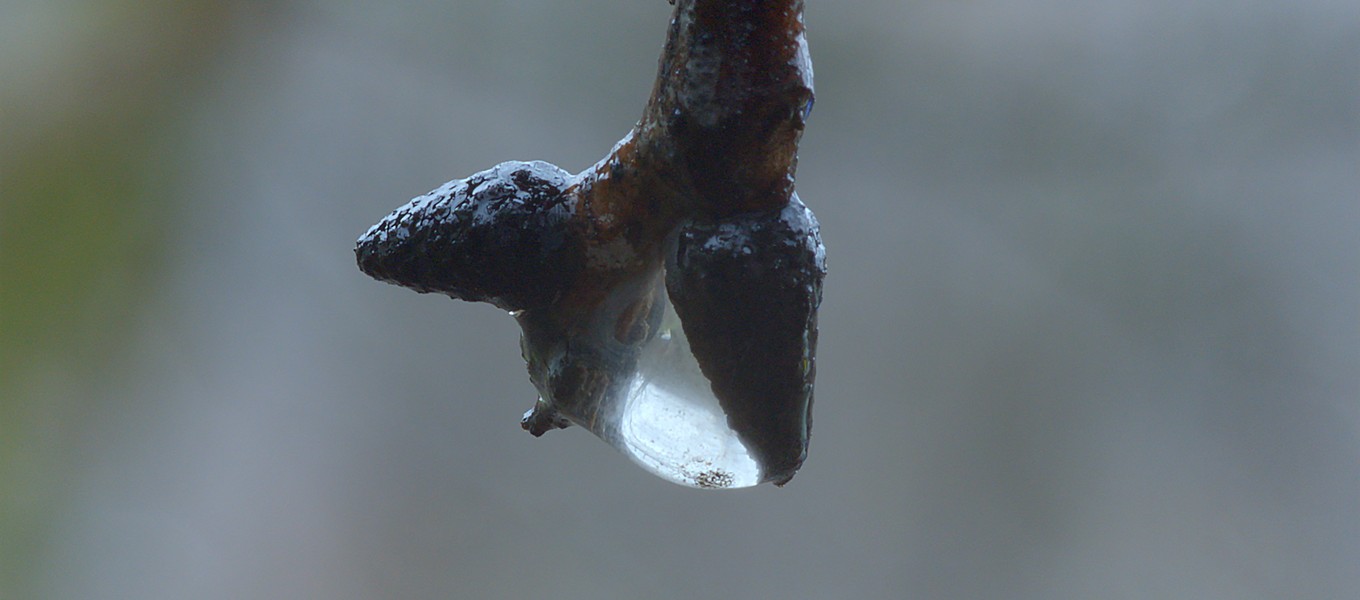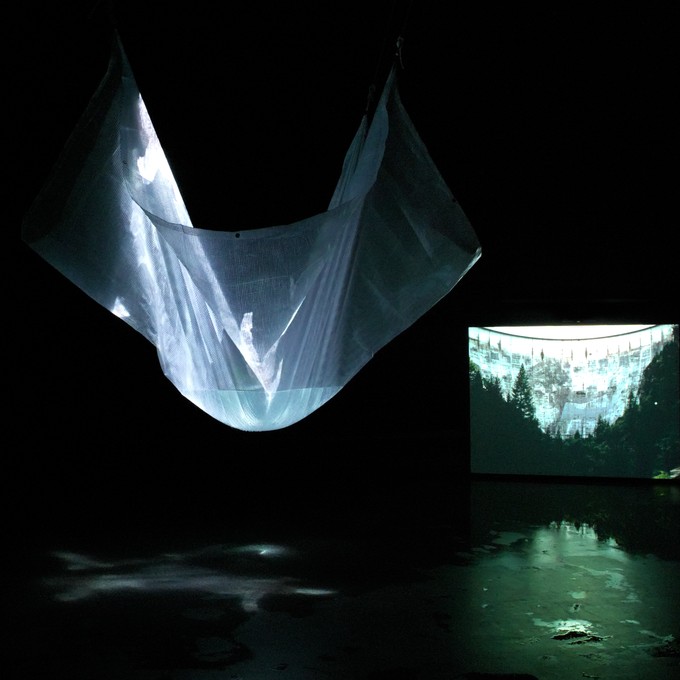Bianca Dacosta
Corpo d'água - Installation - 2023
présentée dans le cadre de l'exposition Panorama 25



Installation
Corpo d'água is an installation which, like a visual and aural poem, navigates between a screen and a suspended plastic sheet, via two video projections.
A sensory space is created in which a virtual, liquid body transits, floats, dives and disappears, transported by the sea, inhabiting a "water greenhouse" that conserves and treats collected rainwater.
Here, water is a physical material and a personified entity, appearing on screen and in space as a narrative fiction that encourages us to become aware of our primary relationship with this element of which we are essentially constituted. It speaks and flows as a source of life, knowledge, memories and transmutation.
Evoking the past and spilling over into the present and future, where human attempts to control and exploit it will leave us in its grip.
Bianca Dacosta
Born in Rio de Janeiro, Brazil, Bianca Dacosta explores notions of memory and natural resources from a political, post-colonial and anti-extractivist perspective. Her methods are rooted in the logic of subjective cartog- raphy and are based on the search for traces of memory of the territory. From this she draws the tools for other perceptions and other narratives of space, the body and nature. More broadly, the prospect of the collapse of civilisation is expressed in her work by attempts at reconciliation with nature.
Her researches translate into a wide range of installations combining performance, photography, film, sculpture and installation. After completing her first degree at the Federal University of the State of Rio de Janeiro (UNIRIO) and the Parque Lage School of Visual Arts, Bianca Dacosta obtained her master's degree from EnsAD in Paris.
She is currently following the course of Le Fresnoy -- Studio national des arts contemporains. In 2020, she was in residence at the Villa Arson. Her work has been presented at the Quadrennial of Performance Design and Space in Prague, UNESCO, Espace Frans Krajcberg, CENTQUATRE-PARIS and Le Carreau du Temple in Paris and Les Grandes Serres in Pantin.
